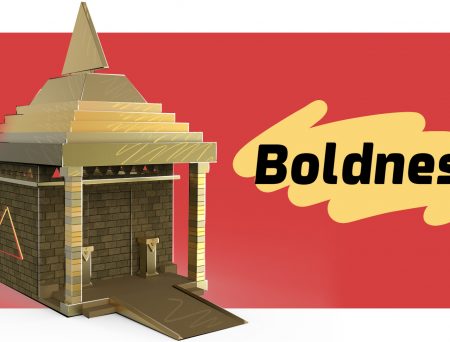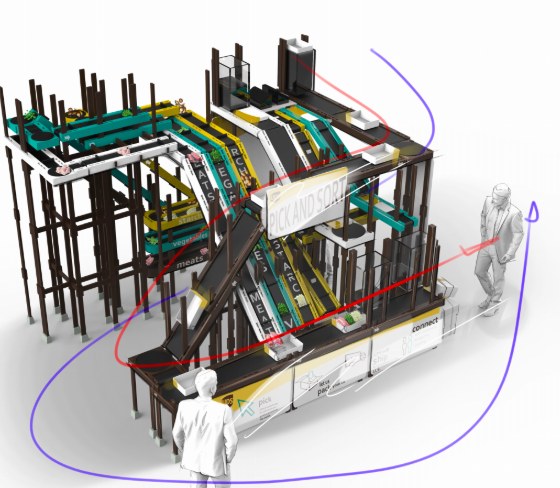It’s one thing to design a product, it’s quite another to design an entire experience. Product design students were challenged to design an immersive, brand experience pop-up shop for one of two unfamiliar user groups: Baby Boomers and Generation X.

“The goal was to get the students to think about a user group that wouldn’t traditionally go to a pop-up shop and to encourage them to talk with users that they weren’t familiar with,” explained course instructor Sara Pedersen. Each student was assigned a user generation and brand, with the task of creating an engaging space for their delegated demographic. The brands chosen for the assignment were selected from Morning Consults Most Loved Brands of 2019—a ranked list of brands that have come to define American culture.
The first challenge students faced was selecting a location and season for their pop-up event that would relate to both their assigned brand and the user group they were trying to reach. Students also had to adhere to the constraints of working within a 15ft x 12ft space and meet the requirements of having a digital interaction moment inside their shop along with supporting furniture pieces and fixtures.
Mary Wilson’s (Product Design) pop-up shop was for Doritos targeted at Generation X. “As cheesy as it sounds, having Doritos as my brand really made me design bolder. I’m glad I had this opportunity to design for a brand and generation I wouldn’t have otherwise chosen.”
Looking through Doritos’ past marketing materials, Wilson concluded that the brand is characterized by adventurous and fearless design choices. “Knowing that they’ve tried everything from fan-created commercials to a temporary arcade, and even a rave, I knew that I could push my design in any direction as long as it was bold,” reflected Wilson. Her final pop-up shop embodied the Dorito’s design philosophy by being daring but also playful. Within the walls of her city-of-gold-inspired puzzle room, El Dorito, visitors attempt to solve puzzles that reveal the origin of the triangles of gold—the golden Doritos (pictured above). To target members in her assigned demographic, Wilson decided to host her shop at the upcoming Super Bowl in Miami, a choice that makes her brand experience part of the game day.
Another student who focused on Generation X was Jakob Wischstadt (Product Design). For his project, Wischstadt designed a meal kit experience to highlight the food shipping services of UPS. “I stumbled upon an interesting statistic during my research stating 60% of Gen Xers have ordered groceries online; that’s 10% higher than the next closest group, Millennials. I saw an opportunity to expand UPS’s current product range to accommodate food shipping,” explained Wischstadt.
Using this insight, Wischstadt’s shop focused on the experience of creating and filling a meal kit. Throughout the project, Wischstadt had to consider user interactions atypical to a standard product. “The project offered a lot of opportunities to be creative and push limits, but the user journey was the highest priority,” he said.
For Pedersen, the most exciting part of the project was watching her students embrace the challenge and get out of their comfort zone. “This type of systems thinking is intimidating for any designer and to pull off concepts in seven weeks is bold,” she concluded. “I’m very proud of the work they did.”
Students in GDes 3353: Packaging and Display partnered with a student group from the College of Food, Agricultural and Natural Resource Sciences (CFANS) last fall to create a brand identity for a proposed tap house on the St. Paul campus.
A fundamental part of working as a professional designer is the ability to effectively communicate and collaborate with designers across disciplines. This fall, retail merchandising students in RM 4216 and graphic design students in GDES 3352 are learning these skills by working together on a single branding project.
Now in its seventh year at the University of Minnesota, the College of Design’s Toy Product Design class is known for its playful atmosphere and rigorous pace.






